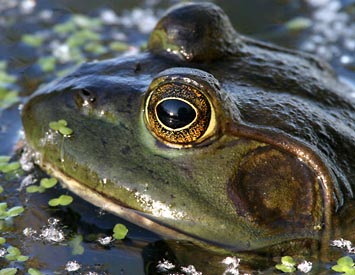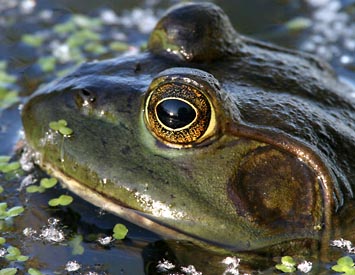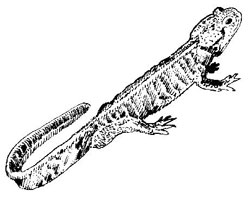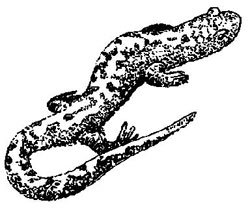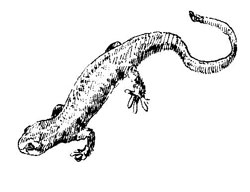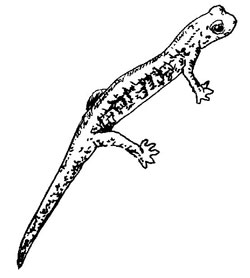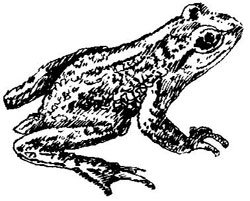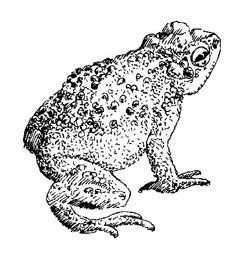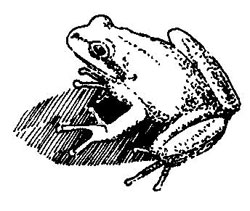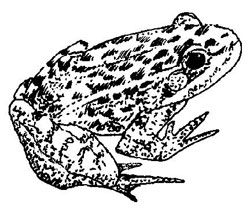Amphibians of Crater Lake National Park
Bullfrog, Lower Klamath National Wildlife Refuge, Northern California, spring
Crater Lake National Park’s Most Tenacious Residents
Moist west winds from the Pacific Ocean rise over the remaining slopes of ancient Mt. Mazama, dispersing a deep and long-lasting blanket of snow. It is surprising that animals whose lives are so directly affected by cold temperatures exist under these conditions. Mother Nature has given these creatures an even greater tenacity to carry on the struggle for life, and long winters and short summers have become their lifestyle.
Amphibians are cold-blooded animals with soft, moist skin, devoid of scales or claws. They are usually associated with water or moist areas. Most amphibians return to water to lay eggs. They feed upon insects, worms, spiders, and other small creatures.
Mazama Newt, or Crater Lake Newt
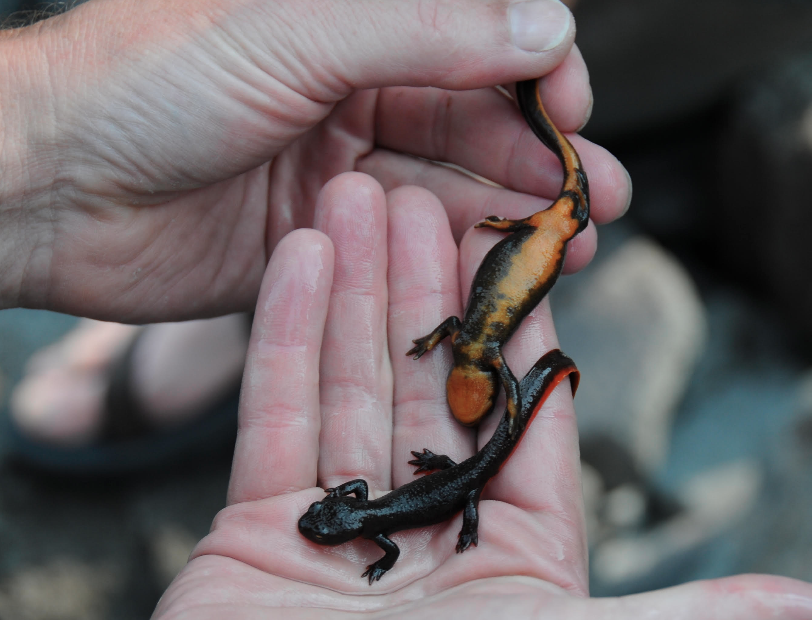
- The Mazama Newt (Taricha granulosa mazamae) is found only in Crater Lake.
- A sub-species of rough-skinned newt.
- Was the native top predator in the lake prior to fish and crayfish introductions.
Park biologists are concerned about the future of the Mazama Newt so they are studying:
- Genetics to confirm the Mazama Newt is a distinct sub-species,
- Locations in Crater Lake to determine the effects of introduced crayfish,
- Toxicity to find out if newts are protected from predators.
All art by Larry Eifert, copyright protected.
Northwestern Salamander
(Ambystoma gracile): This salamander has been found in the northwest corner of the park. It is rarely seen except during its breeding season when it travels to ponds, lakes, and streams. The eggs are laid in large jelly-like masses, and the larva usually transforms into an adult the first year but may not do so in cold climates until the second year. Its color is entirely brown or black. It grows to 6 inches in length. There are large glands on the head and along the top of the tail which secrete a sticky white poison, helping to protect it from predators.
Long-Toed Salamander
(Ambystoma macrodactylum): This species is found throughout the park, including the shores of Crater Lake. It is common in the spring under rocks and logs. It breeds in ponds, lakes, and quiet streams, sometimes when the water is still covered with ice. The eggs are laid singly in water. The larva may not transform until the second year. It is dusky or black and usually has a broken yellow stripe down its back with white specks on its sides. It grows to 6 inches in length.
Rough-Skinned Newt
(Taricha granulosa): Two subspecies are found within the park. The Northern Rough-Skinned Newt is found along moist water courses and bog areas on the western side of the park. The Crater Lake Newt is found only within the caldera of Crater Lake. It differs from the Northern Rough-Skinned Newt in being heavily marked with black or dark brown on its ventral surface. Newts possess a potent skin secretion which helps protect them from most predators. They are aquatic for a good part of the year, breeding in lakes, ponds, and slow-moving streams. The eggs are laid singly. The color is black to dark brown on the upper surface and yellow or reddish-orange below. They grow to 8 inches in length.
Oregon Salamander
(Ensatina eschscholtzi oregonensis): These salamanders have been observed at Annie Spring, Vidae Falls, Red Blanket Creek, and in the panhandle of the park, and are usually found under moist logs, bark, or rocks. The Oregon Salamander has no lungs and breathes through its moist, slippery skin. It is terrestrial, laying its eggs on land. The young are fully formed when hatched. They are brown to orange in color, 5 inches long, with a constricted tail base.
Tailed Frog
(Ascaphus truei): This species inhabits cold running streams and has been observed in Bybee, Copeland, and Castle Creeks. It is unique in that fertilization is internal. The eggs are laid in rosary-like strings under stones in running streams. The tadpoles have a large sucker-like mouth which helps them cling to rocks in running water. The frog lacks an external ear and is voiceless. It is olive, brown, gray, or sometimes reddish. It is rather flat-bodied and toad-like, 2 inches long. The males have a tail-like copulatory organ with the vent located at its tip.
Boreal Toad
(Bufo boreas boreas): This species is found throughout the park. It is usually active at night, but may be found during the day along streams and moist meadows. It breeds in Crater Lake and quiet ponds and streams. The eggs are laid in long jelly strings. The tadpoles transform into small toads during the first year. Its color is gray or greenish, often tinged with red. There is a light colored stripe down its back and dark blotches on the ventral surface. This toad has numerous warts. It grows up to 5 inches.
Pacific Treefrog
(Hyla regilla): This species is found throughout the park. It is not restricted to water courses but may be found in moist areas. It is often seen during the day. The color varies from green, brown, gray, gold, or black, with a black eye stripe, and it can change colors in a few minutes. Its length is 2 inches. The Pacific Treefrog is commonly heard in the evening during spring and summer. It will breed in almost any pond or pool. The eggs are found in small jelly masses attached to debris in the water. Tadpoles transform into small frogs the first year.
Cascades Frog
(Rana cascadae): This frog is commonly found along all water courses in the park and is usually seen sunning along banks where it can retreat into water to escape its enemies. It matures in 3 years. The eggs are laid in jelly clusters in permanent bodies of water. Its length is 2.5 inches. It has sharply defined inky black spots on the back and dark spotting on the legs. The abdomen and under side of the hind legs are yellow.
***previous*** — ***next***
